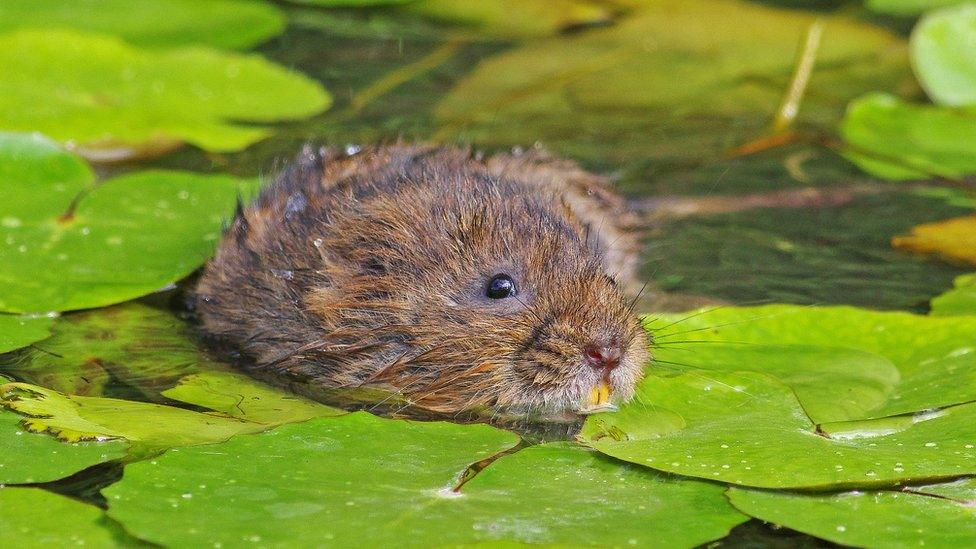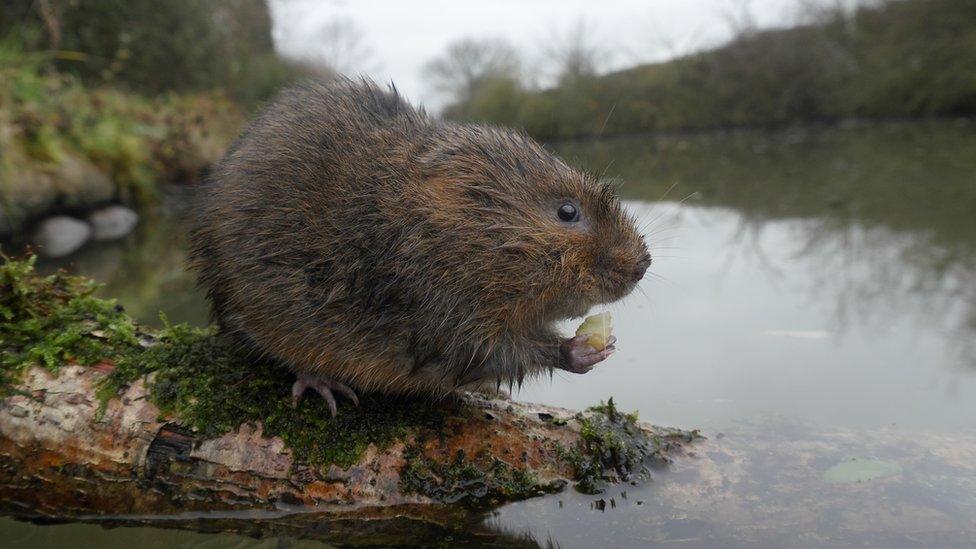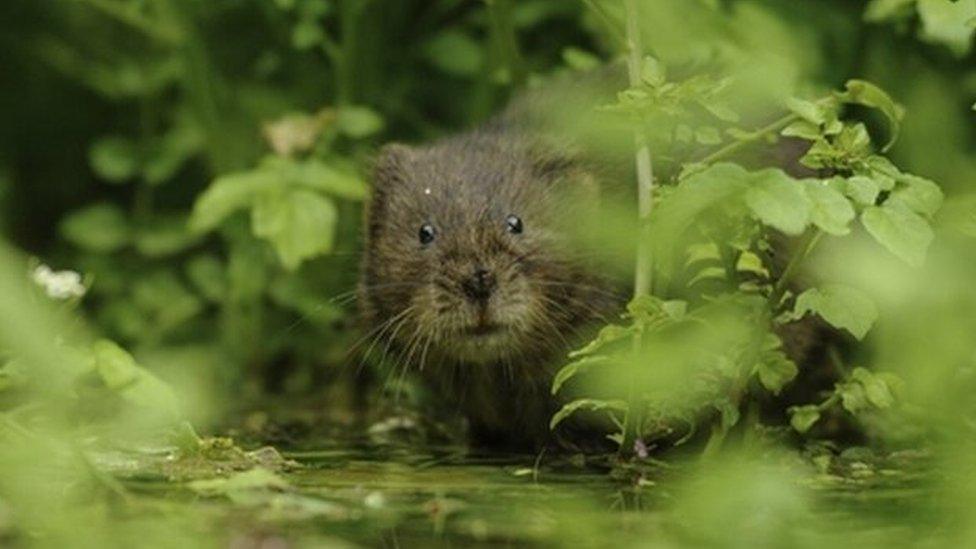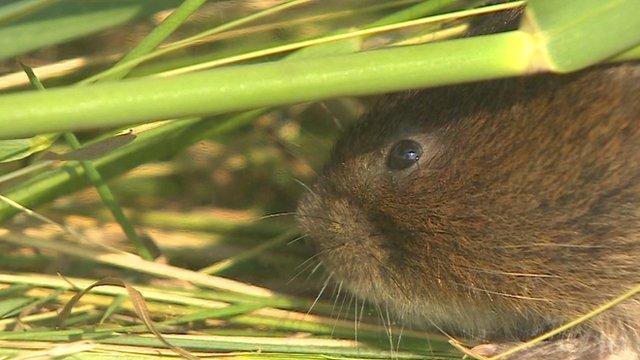Water voles return to southern Cornwall after 30 years
- Published

Water voles became extinct in Cornwall in the 1990s
A "really important" species of vole is being reintroduced after becoming extinct in Cornwall in the 1990s.
Water voles, which are water-based animals living on the edges of ponds and rivers, declined in the UK due to habitat loss and American mink being released into the wild.
About 150 water voles are being released into southern Cornwall.
Kernow Conservation said mink, which had previously "wiped out" vole populations, would be monitored.
Reintroduction project manager Alana Scott said: "They [water voles] are a really important species as a prey species for other predators.
"Larger creatures such as otters and herons would often eat water voles, so, by reintroducing them, we're sort of restocking for larger species."
Water voles have a varied diet, which includes more than 200 plant species, meaning their feeding and burrowing activities also create habitats and opportunities for many other animals.

Numbers of water vole (pictured) across the UK saw declines after American mink were released into the wild
David Carrier, from Kernow Conservation, said releasing mink into the wild "basically wiped out the populations in lots of local areas, especially in Cornwall".
Mink were small enough to hunt voles in their burrows, he explained.
Water voles were recently reintroduced in Bude, and Kernow Conservation was currently working with Trelusback Farm in Cornwall to reintroduce the species to southern Cornwall, the conservation group said.
They were last seen in the 1990s in Par, Godolphin and Bude.
'Breed really rapidly'
Ms Scott said the team at Kernow Conservation had set up plastic containers, called mink rafts, to monitor mink in the local area.
However, she said "luckily" there had been no signs yet.
Water voles are the largest type of voles in the UK, weighing between 0.2kg and 0.35kg (0.44lb and 0.77lb) - making them a substantial food source for many predators, including owls, kestrels, herons, foxes, stoats, otters and weasels.
Because they were so rare and endangered, and mink were the "most dangerous creature" to them, the animals being reintroduced had been bred in captivity, Mr Carrier explained.
The team is releasing 150 and hopes to release the same number in June 2023.
"They breed really rapidly, so hopefully they'll expand and spread throughout the local area," he said.

Follow BBC News South West on Twitter, external, Facebook, external and Instagram, external. Send your story ideas to spotlight@bbc.co.uk, external.
Related topics
- Published3 December 2020

- Published30 November 2020

- Published6 September 2013
